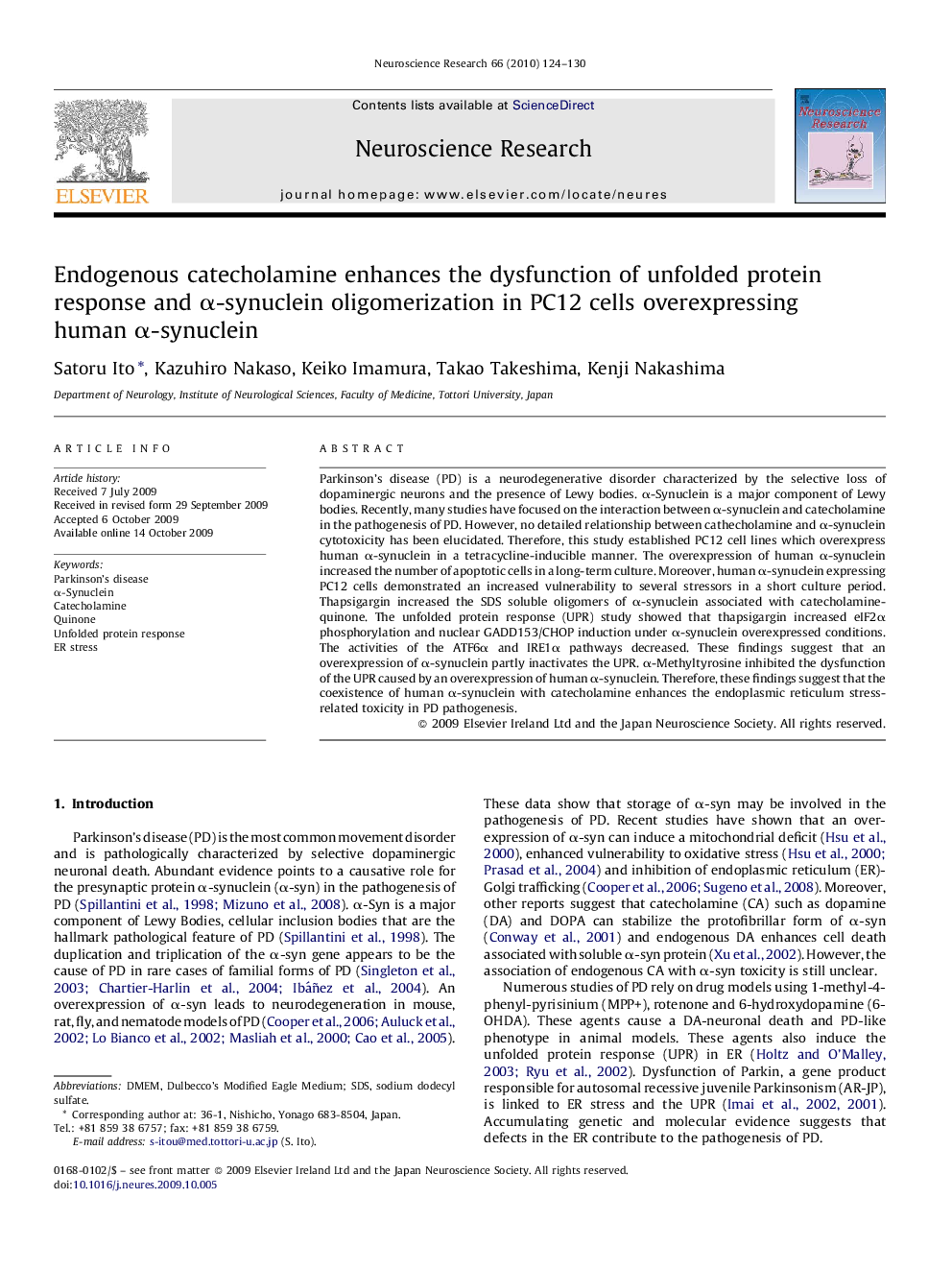| Article ID | Journal | Published Year | Pages | File Type |
|---|---|---|---|---|
| 4351796 | Neuroscience Research | 2010 | 7 Pages |
Abstract
Parkinson's disease (PD) is a neurodegenerative disorder characterized by the selective loss of dopaminergic neurons and the presence of Lewy bodies. α-Synuclein is a major component of Lewy bodies. Recently, many studies have focused on the interaction between α-synuclein and catecholamine in the pathogenesis of PD. However, no detailed relationship between cathecholamine and α-synuclein cytotoxicity has been elucidated. Therefore, this study established PC12 cell lines which overexpress human α-synuclein in a tetracycline-inducible manner. The overexpression of human α-synuclein increased the number of apoptotic cells in a long-term culture. Moreover, human α-synuclein expressing PC12 cells demonstrated an increased vulnerability to several stressors in a short culture period. Thapsigargin increased the SDS soluble oligomers of α-synuclein associated with catecholamine-quinone. The unfolded protein response (UPR) study showed that thapsigargin increased eIF2α phosphorylation and nuclear GADD153/CHOP induction under α-synuclein overexpressed conditions. The activities of the ATF6α and IRE1α pathways decreased. These findings suggest that an overexpression of α-synuclein partly inactivates the UPR. α-Methyltyrosine inhibited the dysfunction of the UPR caused by an overexpression of human α-synuclein. Therefore, these findings suggest that the coexistence of human α-synuclein with catecholamine enhances the endoplasmic reticulum stress-related toxicity in PD pathogenesis.
Keywords
Related Topics
Life Sciences
Neuroscience
Neuroscience (General)
Authors
Satoru Ito, Kazuhiro Nakaso, Keiko Imamura, Takao Takeshima, Kenji Nakashima,
